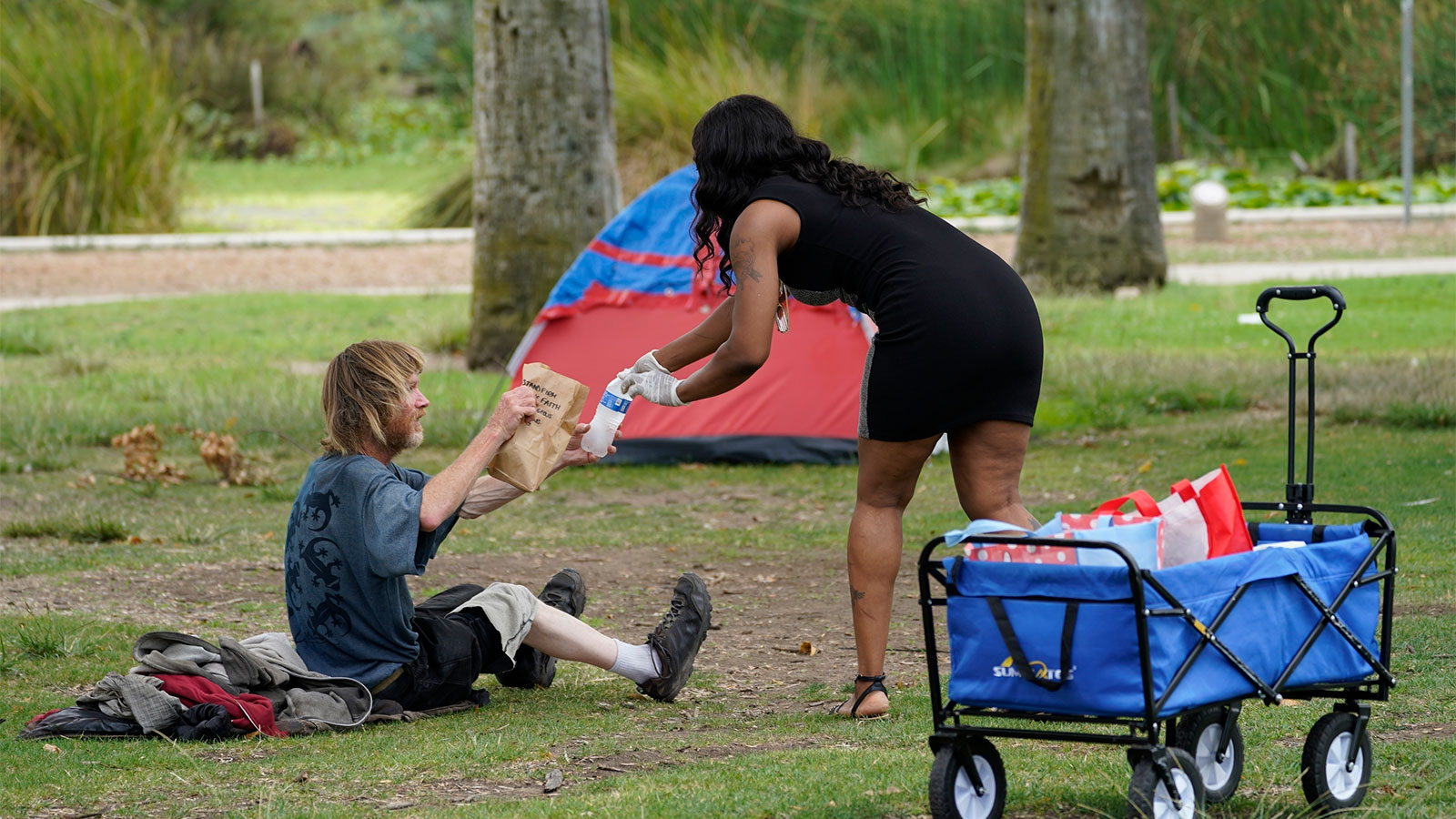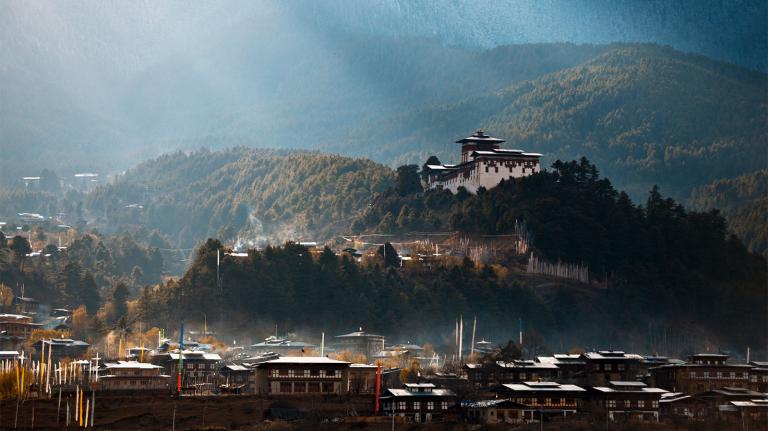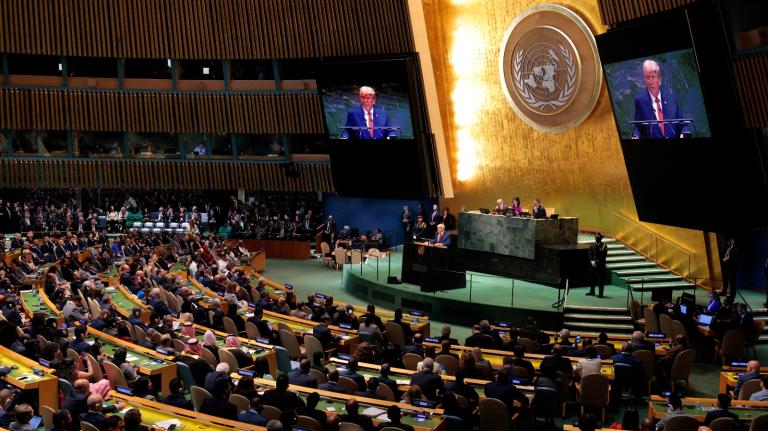Theodore Henderson has experienced lots of heat waves during the seven years that he’s been homeless in Los Angeles. But when temperatures hit 97 degrees F in Los Angeles County earlier this month, Henderson’s usual coping strategy was unavailable. In previous years, Henderson would have gone to a nearby library to get out of the sun and enjoy some air-conditioned relief, but with the COVID-19 pandemic, all the city’s public libraries are closed.
Heat waves are the deadliest weather-related event to hit cities every year, killing on average 702 people annually nationwide, and their impact will only worsen with climate change. For the nation’s 568,000 homeless people, 66,000 of whom live in Los Angeles County, the heatwave is adding to the challenges of a population already vulnerable to the crises of COVID-19, climate change, and police brutality.
Cities nationwide, including L.A. as well as Boston, New York, and San Francisco, open cooling centers — public spaces where people can access air conditioning — to mitigate the health impacts of heat waves for populations without access to air conditioning, including (in theory, at least) the unsheltered homeless community. With the pandemic, cooling centers in many of these cities, including L.A., are operating at reduced capacity to promote social distancing. In L.A., there are only four cooling centers run by the city, and 13 run by the county. But despite the slashed capacity of the cooling centers, Rose Watson, the director of public information at L.A.’s Department of Recreation and Parks, said that not a single one has been filled during the current heatwave.
The reasons for that are complicated. Henderson says he hasn’t been to a cooling center yet, nor has anyone he knows, for fear that his belongings will be gone when he gets back to the area where he keeps them. In March, the Los Angeles City Council voted to stop street sweeps that require residents of homeless encampments to take their tents down, allowing homeless Angelenos to shelter in place. In July, however, the council voted to resume these sweeps in areas around “bridge housing” shelters, despite recommendations from the CDC that encampments not be cleared during the pandemic. These sweeps, conducted by the Los Angeles Police Department and Los Angeles Department of Sanitation, often confiscate the belongings of homeless people. The Los Angeles City Council spent $30 million on these street sweeps in 2019.
Much of Henderson’s day-to-day activities revolve around avoiding getting his stuff taken by Sanitation or the LAPD. When his belongings were last taken by Sanitation two years ago, they took everything — his pillow, his hygiene products, his clothes, and even his diabetes medication. After losing your belongings in a sweep, “you have to start over from ground zero,” says Henderson. The threat of losing his medication makes managing diabetes, almost “near impossible on the streets,” even more difficult.
Henderson says the threat of having his belongings taken during a sweep is a major factor preventing him and other homeless people from accessing city cooling centers, or being able to go nearly anywhere at all. To get to a cooling center, he’d either have to pack up his belongings to take public transportation, which he says is both cumbersome and could make him a target for harassment, or leave his belongings unattended and vulnerable. “Let’s be realistic. We have aggressive sweep displacements going on. I think it’s crazy to even think that people would want to say ‘OK, let’s move my stuff, and have my stuff taken when I come back after cooling down,’” he told Grist.
In response to a request for comment from Grist, a spokesperson for the Department of Sanitation confirmed that the department is doing “test runs” of street cleanups near bridge housing shelters and said the department will go back to the City Council “with recommended protocols upon completion of the test runs soon and then will follow their direction.” The spokesperson also said that the department makes “Mobile Hygiene Unit (showers, toilets, sinks), first aid care, COVID testing by LAFD [the Los Angeles Fire Department], tent exchange, PPE, hand sanitizer and toiletry giveaway” available to homeless people during sweeps.
Joanna Swan, an organizer for Street Watch L.A., a Los Angeles–based homeless advocacy organization, says sweeps are dangerous, especially during heatwaves. “In these sweeps, they’re throwing out the stuff that people use to protect themselves during the climate crisis — shade structures, food, water,” said Swan. “They’re putting people’s lives at risk.” Swan says that Street Watch L.A. advocates for heat relief for the homeless community to be incorporated into the city’s responses to heat waves. “We see it as a form of environmental racism,” she said, given the disproportionate impact of homelessness on Black Angelenos.
Street sweeps aren’t the only obstacle keeping homeless people out of cooling centers. Harvey, who didn’t want to provide his last name to Grist, has been homeless for 16 years, 15 of which he’s spent living in a tent near the 101 freeway, in L.A.’s Chinatown. In that time, he’s never gone to a city cooling center to escape the heat, because of how temporary of a solution it is. “The cooling center isn’t going to do anything for us, because we’re only going to be there temporarily,” says Harvey.
The risk of COVID-19 transmission is also a concern, said Henderson, both in cooling centers and homeless shelters. COVID-19 has spread through homeless shelters around the country, leading to higher rates of COVID-19 mortality for homeless people living in shelters than unsheltered homeless people. Even before the virus was a consideration, Harvey says he got bronchitis after using a shelter shower. Between concerns over COVID and losing their belongings, for Henderson and Harvey, getting to a cooling center just isn’t worth it. Both men are trying to stay cool by taking shelter in tents or in the shade.
Beyond the cooling centers, there is little city outreach to the homeless community during heat waves. Grassroots, volunteer-led organizations like Ktown for All have tried to fill the gap by providing homeless communities with frozen water bottles and even DIY air conditioners (dubbed “swamp coolers”) made from ice, styrofoam coolers, and battery-operated fans. “We are definitely concerned about our unhoused neighbors during this heat wave,” said Robert Chirila, a Ktown for All organizer. “Even housed people are at risk of heat-related illness, and our unhoused neighbors are exposed to the elements without consistent access to water. Many of our unhoused neighbors are also elderly and/or dealing with chronic health conditions, both factors that increase their vulnerability to extreme heat.” But these efforts are only temporary relief; Ktown For All simply doesn’t have the resources to provide anything more than that.
A more permanent solution would be, obviously, providing stable housing for homeless people. In 2019, Los Angeles had a shortage of over 516,000 affordable housing units. Henderson has been waiting for three years for Section 8 housing approval, which would give him access to a federally-funded rent voucher. As an emergency housing response to the pandemic in March, California Governor Gavin Newsom launched Project Roomkey, a program designed to house homeless people in empty hotel rooms. The project aims to provide temporary housing for 15,000 people in Los Angeles County, less than 25 percent of the county’s unsheltered population, and has gotten off to a slow start — currently, the project has housed just over 4,300 people.
Meanwhile, as the pandemic progresses, more people nationwide are at risk of eviction and homelessness. The federal moratorium on evictions under the CARES Act expired on July 24, leaving up to 40 percent of U.S. tenants at risk of eviction, 12 million people over the course of the next four months. In L.A. alone, 364,000 families are facing the possibility of eviction when statewide evictions protections expire; in California, unless legislative action is taken, mass evictions could begin as soon as September 2.
That means many more could soon find themselves pinned between heat waves, concerns about the virus, and fears of street sweeps as the pandemic and climate change continue. “Most of us believe that the city needs to be doing more to help unhoused people stay safe during a heatwave, and to help unhoused people get housed,” said Chirila. “I personally see the lack of solutions for this issue as emblematic of the way many city officials seem to think they can ignore unhoused people and their immediate, life-or-death needs.”
Correction: This article originally misspelled Robert Chirila’s last name.




